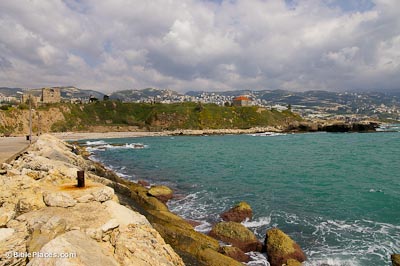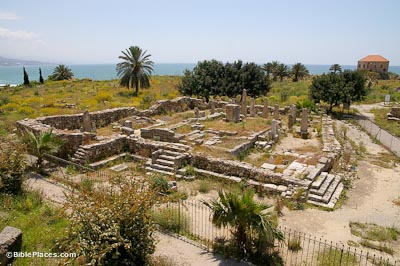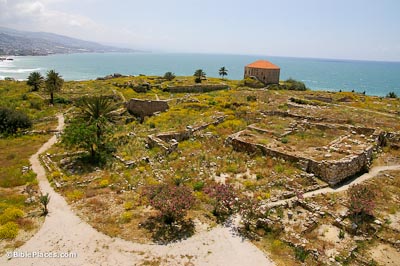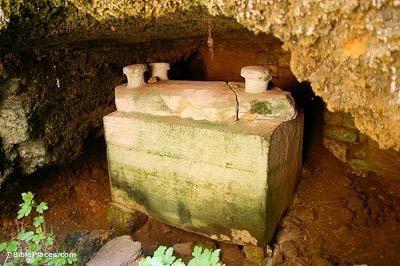Ancient Byblos is located in the modern city of Jbail. It is regarded as one of the longest, continuously-inhabited cities in the world. Archaeologists have revealed 21 occupational strata at the site. The older name for Byblos is Gubla or Gebal. It appears this way in some Bible translations (Josh 13:5; 1 Kgs 15:8; Ezek 27:9).
Byblos

Tell Byblos
Obelisk Temple
The Obelisk Temple is named after the nearly 30 obelisks discovered standing in the temple’s courtyard. The excavators dismantled the Obelisk Temple and reconstructed it to the east of its original location, allowing for excavation of the earlier “L” Temple beneath it.


Temple of Baalat Gubal
Baalat Gubal, or the Lady of Byblos, was the chief goddess of Byblos in the Late Bronze Age and through the 1st millennium BC. She is mentioned frequently in the Amarna Letters sent by Rib-Addi, the king of Byblos, to the pharaoh, as well as in 10th-century, Phoenician inscriptions of the kings of Byblos. Attempts have been made to equate Baalat Gubal with the Egyptian goddess Hathor or with the Canaanite goddess Ashtarte.
Royal Necropolis
A landslide in 1922 revealed the location of the royal necropolis. There are nine shaft tombs which date from the 18th century BC and the 10th century BC. Tomb I belonged to King Abi-shemu I and tomb II belonged to his son, Prince Ipy-shemu-abi, contemporaries of Amenemhat III and Amenemhat IV of Egypt’s 12th dynasty.


Download all of our Lebanon photos!
$34.00 $49.99 FREE SHIPPING
Related Websites
Byblos (Livius) This page has good information and a wealth of photos.
Byblos (Britannica) An encyclopedia article that serves as a simple introduction to the site.
The World’s Longest Continuously Inhabited City (World Atlas) This article looks more at the modern city of Byblos than the ancient ruins we focus on, although it does include a helpful history.
Byblos Ruins (ByblosRuins.com) This site is particularly helpful for its inclusion of multiple maps; of particular interest to our readers may be items under the “Archeology” tab.
Byblos Archaeological Site (Atlas Obscura) Including several photos, this short article is an interesting read.
Beirut Museum Survives (Biblical Archaeology Society) While this article (obviously) focuses on the Beirut Museum, it opens with an inscription from Byblos that mentions the site and highlights a variety of other artifacts.
Temple of the Obelisks, Byblos (Lebanon Untravelled) The highlight of this article is several excellent photos of the obelisks.